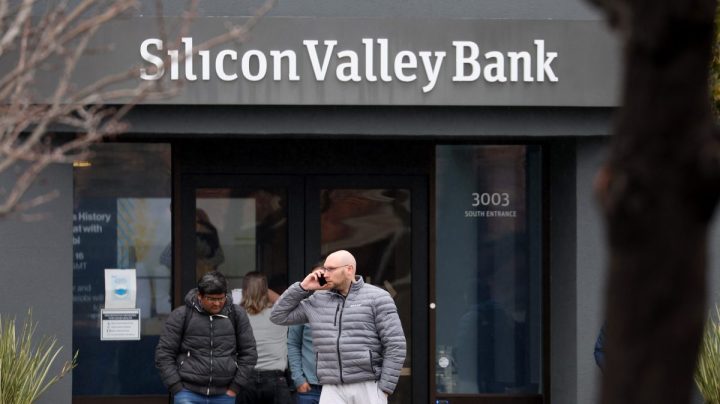
Why we’re paying extra attention to senior loan officers right now
Why we’re paying extra attention to senior loan officers right now

The Federal Reserve’s Senior Loan Officer Opinion Survey on bank lending practices, or SLOOS, usually doesn’t make waves. Its next release however, could provide valuable insight into the future of this economy, showcasing how senior loan officers are operating following the collapse of Silicon Valley Bank and Signature Bank last month.
“For purposes of our monetary policy tool, we’re looking at what’s happening among the banks and asking, ‘Is there going to be some tightening in credit conditions?’” Federal Reserve Chair Jerome Powell said at the March Federal Open Market Committee meeting. “It’s highly uncertain how long the situation will be sustained or how significant any of those effects would be, so we’re just going to have to watch.”
The survey goes out to senior loan officers at up to 104 banks across the country. It asks questions about how demand for different loans to businesses and households have changed, as well as if banks are tightening standards for those loans. The Federal Reserve is authorized to conduct the survey up to six times a year, but it’s typically done four times a year.
Kent Belasco, director of Marquette University’s commercial banking program, has 37 years of experience in the banking world, so he’s seen what happens at these institutions when the central bank raises the federal funds rate. Since March 2022, the Federal Reserve has raised that rate from near zero to 4.75%-5%.
“The more they increase the interest rate, it’s going to make getting credit much, much tougher,” Belasco said. “Businesses aren’t going to take out loans. Consumers are going to start to pull in.”
It’s part of the Fed’s plan to tame inflation.
In the most recent Fed survey, about the fourth quarter of 2022, senior loan officers reported tighter standards and weaker demand for all sorts of loans, and they said they expected those trends to continue into 2023. These results were collected before the recent bank failures.
“I would say they’re isolated circumstances,” Belasco said of the bank failures. “But it does have an impact on the banking industry as a whole.”
The banks could make fewer loans going forward, acting with extra caution “if they’re concerned their deposit base isn’t stable,” said Cara McDaniel, an economics professor at Arizona State University. This extra tightening of credit conditions would mean more economic slowing.
“This is where people talk about long and variable lags to monetary policy,” McDaniel said. “The variable part is the unexpected part. There’s things that this tightening of monetary policy is going to uncover that we weren’t really aware of before.”
There’s no official date for the release of the next survey, but it is expected to come later this month.
There’s a lot happening in the world. Through it all, Marketplace is here for you.
You rely on Marketplace to break down the world’s events and tell you how it affects you in a fact-based, approachable way. We rely on your financial support to keep making that possible.
Your donation today powers the independent journalism that you rely on. For just $5/month, you can help sustain Marketplace so we can keep reporting on the things that matter to you.












